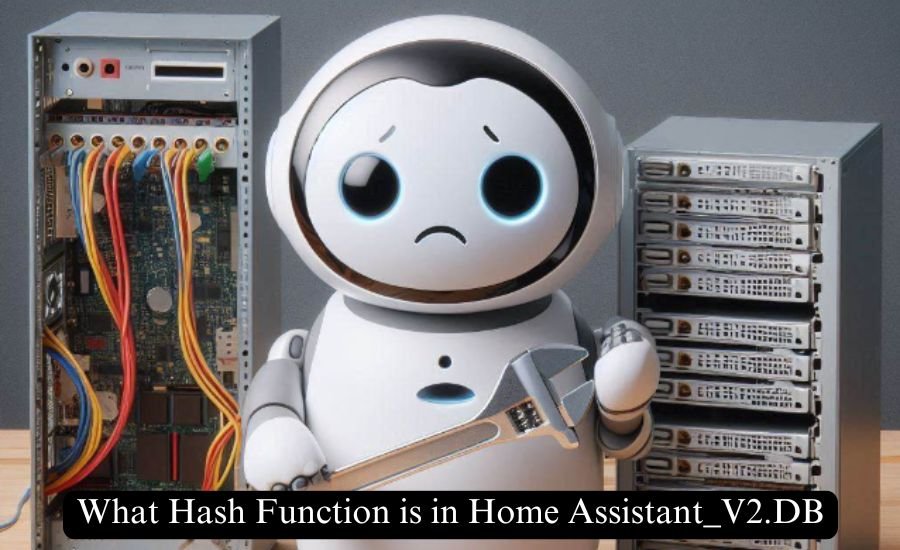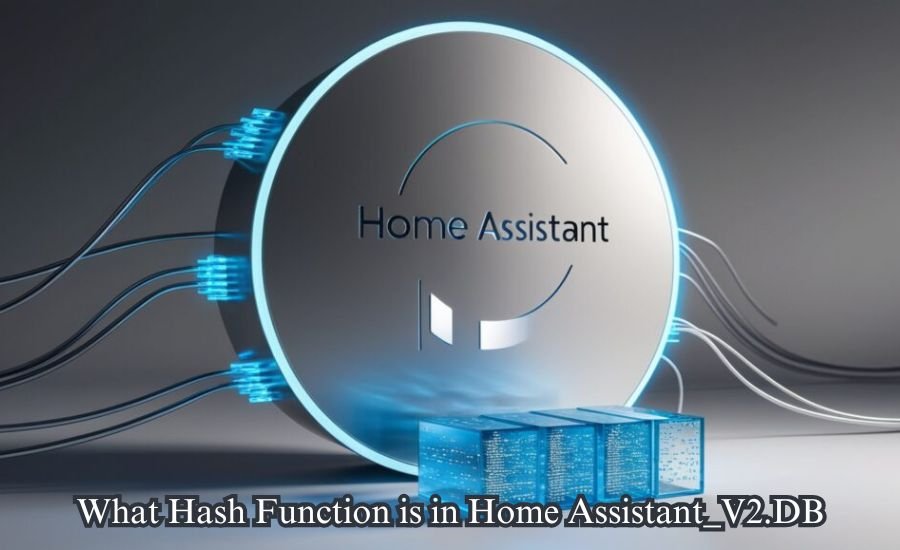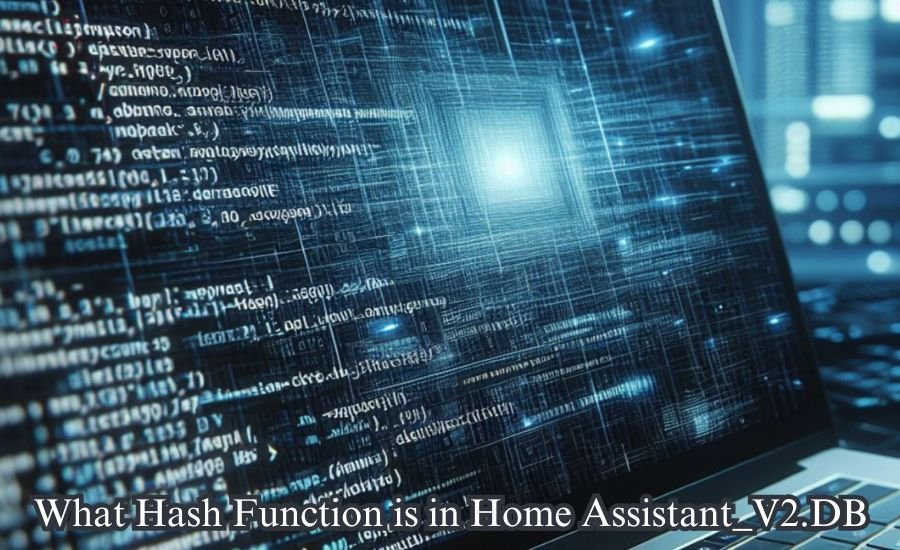What hash function is in home assistant_v2.db? This question is essential for anyone using Home Assistant, a smart home platform that helps you control your devices. The hash function is a unique tool that keeps your data safe and sound. It turns your information, like passwords, into a secret code. This way, even if someone tries to peek, they can’t see your data!
When you log into Home Assistant, your password is changed into this code using a hash function. If someone enters the database, they only see the code, not your password. This makes it very hard for anyone to steal your information. Understanding what hash function is in home assistant_v2.db helps you see how Home Assistant keeps your smart home secure.
What Is a Hash Function? Understanding the Basics
A hash function is a special kind of tool used in computer science. It takes input data, like a password, and changes it into a fixed-size string of characters. This string is like a secret code that represents the original data. Even a tiny change in the input will produce a very different code. This is what hash function is in home assistant_v2.db and why hash functions are essential for security.
When you create an account, your password gets transformed by a hash function. This means that the website does not store your password in plain text. Instead, it saves the secret code. This makes it much harder for someone to steal your password. If someone tries guessing your password, they will only see the code, not the word you used.
Hash functions help keep your data safe. They are used in many places, like websites and apps. In-Home Assistant, understanding hash functions is critical. They ensure your information, like your smart home controls, stays private and secure. Knowing what hash function is in home assistant_v2.db and how these functions work can help you feel more confident using technology.
Why Is It Important to Know What Hash Function Is in Home Assistant_v2.db?
Learning about the hash function in Home Assistant_v2.db is essential for users. Home Assistant is a platform that connects smart devices in your home. It helps you control lights, security systems, and more. Knowing how it protects your information makes using it safer.
When you log in, your password is hashed before being stored in the database. This means even if someone accesses the database, they won’t find your password. Instead, they will only see the hashed version, which is hard to crack. This keeps your smart home secure from unwanted access.
Understanding the hash function in Home Assistant_v2.db also helps users realize the importance of strong passwords. Even if a password is hashed, a weak password can be guessed easily. So, using a strong password and the hashing process increases your security. It’s like having two locks on your door!
How Does the Hash Function Work in Home Assistant?

The hash function works by taking your input, like a password, and turning it into a code. In-Home Assistant, when you sign up or log in, the system applies a hash function to your password. This function processes the password and produces a unique hash.
For example, let’s say your password is “mySecret123.” The hash function will change this into a code like “a1b2c3d4e5.” The new code does not give away any clues about the original password. This is what hash function is in home assistant_v2.db and why hash functions are crucial for security.
Whenever you log in, the Home Assistant has your password. It then compares this new hash with the one stored in the database. If they match, you can log in! If not, the system knows the password needs to be corrected. This method protects your information and makes Home Assistant a safe place for managing your smart home.
The Benefits of Using a Hash Function for Security
Data Integrity
- Hash functions ensure that data remains unchanged. Any alteration in the original data will result in a different hash, making it easy to detect tampering.
Secure Password Storage
- Instead of storing plain-text passwords, systems use hash functions to store hashed versions. This adds a layer of security, as the original password cannot be easily retrieved from the hash.
Fast Data Verification
- Hash functions enable quick verification of data. When comparing files or data sets, the hash can be checked instead of all the data, saving time and resources.
Data Deduplication
- Hash functions help identify duplicate files in storage systems. By comparing hashes, systems can efficiently eliminate redundant data and optimize storage space.
Efficient Data Management
- Hashing improves data retrieval and organization. It allows for fast access to data by using hash tables, reducing lookup times in databases.
Cryptographic Security
- Many hash functions are designed to be secure against attacks. Robust algorithms like SHA-256 are resistant to collisions, ensuring reliable security.
Non-reversible
- Hash functions are one-way processes that cannot be reversed to obtain the original data. This characteristic enhances security for sensitive information.
By leveraging these benefits, hash functions are crucial in enhancing data protection and integrity security measures.
Keeping Your Data Safe: What Hash Function Is in Home Assistant_v2.db
Keeping your data safe is vital, especially in today’s digital world. Home Assistant uses hash functions to secure your passwords and sensitive information. Knowing the hash function in Home Assistant_v2.db can help you understand how your data is protected.
The hash function changes your password into a unique code. This way, even if someone hacks into the system, they will only see the code, not your actual password. It’s like a magic trick that hides your information from prying eyes.
Hash functions hide passwords and help prevent unauthorized access. When you log in, the system checks the password you entered against the stored hash. If they match, you can enter your smart home. If not, you are kept out. This process ensures that only you have control over your smart devices.
What Happens to Your Passwords in Home Assistant_v2.db?
When you create an account in Home Assistant, your password undergoes an important transformation. The system uses a hash function to change your password into a secret code, which is stored in the database, not your actual password.
For example, when you type “myPassword” into the login field, the hash function creates a code like “abc123hash.” This code is what Home Assistant keeps in its database. If someone were to break into the database, they would only see this code, making it very difficult for them to figure out your actual password.
This system is a great way to keep your passwords safe. However, a strong password is also essential. The hash function can only do so much. If your password is weak, it can still be guessed. So always choose a strong password to protect your home even more!
The Role of Hash Functions in Smart Home Security

Hash functions play a vital role in keeping smart homes secure. Home Assistant relies on these functions to protect user data from potential threats. Changing passwords into hashes makes it difficult for hackers to steal information.
Smart homes are becoming more popular, and so are their associated risks. Knowing how hash functions work helps users understand the security measures in place. When you know your data is protected, you can use smart devices confidently.
In addition, the role of hash functions goes beyond just passwords. They also help verify the integrity of the data. This means that any changes to the stored information can be detected. If a hacker tries to alter your data, the hash function will notice the change and alert the system. This adds an extra layer of security to your smart home.
Comparing Different Hash Functions: Which Is Best for Home Assistant?
Many types of hash functions are available, and each has its strengths. Some popular hash functions include SHA-256, SHA-1, and MD5. Each function works differently and offers various levels of security.
For a Home Assistant, it is important to use a strong and secure hash function. SHA-256 is one of the best choices because it provides a high level of security. It produces a longer hash than others, making it harder to crack.
Comparing these functions helps users understand which is best for their needs. Knowing the differences can guide you in making informed decisions about your data security. Using a solid hash function in Home Assistant_v2.db helps keep your smart home safe and secure.
How Home Assistant Uses Hash Functions for Data Integrity
Data integrity is about making sure that information is accurate and trustworthy. Home Assistant uses hash functions to help maintain data integrity. When your password is hashed, it creates a unique code that can be checked later.
Home Assistant compares the stored hash with the one created with the password you entered every time you log in. If the two hashes match, the system knows your password is correct. If they don’t, it alerts the user that the password is wrong. This process ensures that only accurate information is stored and accessed.
Moreover, hash functions protect against changes to the data. The hash will no longer match if someone tries to tamper with the stored information. This alerts the system and helps keep your smart home secure. Data integrity is essential for maintaining trust and security in your smart home.
What Hash Function Is in Home Assistant_v2.db? A Simple Explanation
The hash function in Home Assistant_v2.db is a tool that turns your passwords into secret codes. It does this by taking your input and creating a unique string that represents it. This process helps keep your data safe.
When you create an account, your password is not saved in plain text. Instead, it is hashed into a code. If someone tries to access your data, they will only see the hash, making it very hard for them to figure out your password.
Understanding the hash function in Home Assistant_v2.db helps you see how the system protects your information. It shows you that your data is not just stored openly but is securely coded. This knowledge can give you peace of mind while using Home Assistant for your smart home.
Protecting Your Smart Home: Why Hash Functions Matter

Hash functions are crucial for protecting your smart home. They keep your passwords and personal information safe from hackers. Knowing why hash functions matter can help you understand the importance of security in your smart devices.
When you use Home Assistant, your passwords are transformed using a hash function. This means they are not stored as plain text. If a hacker enters the database, they will only see the hash, making it difficult to steal your information. This adds a layer of security to your smart home.
Additionally, hash functions help maintain user privacy. By ensuring that passwords are hashed, Home Assistant keeps your data secure. This means you can control your devices without worrying about someone else accessing your information. Understanding what hash function is in home assistant_v2.db and how this can help you feel more confident using smart home technology.
Real-Life Examples of Hash Functions in Action
Hash functions are used in many real-life situations. For example, when you log into your favourite website, your password is usually hashed. This means that the website does not store your password in plain text, keeping it secure.
Hash functions work similarly in Home Assistant. When you log in, the system hashes your password before saving it. This way, even if someone gains access to the database, they cannot see your real password. It’s a simple yet effective way to protect your information.
Another example is in online banking. Banks use hash functions to secure customer data and transactions. When you make a payment, your information is hashed to keep it safe. These real-life examples show how essential hash functions are for securing our data.
How to Ensure Your Data Stays Safe with Hash Functions
To ensure your data stays safe with hash functions, follow some best practices. First, always use strong passwords. A strong password makes it harder for anyone to guess, even if it is hashed. Combine uppercase and lowercase letters, numbers, and symbols for the best results.
Second, keep your software updated. Home Assistant regularly releases updates that can improve security. Installing these updates ensures you have the latest features and protections in place.
Finally, regularly check your accounts for any suspicious activity. If you notice anything unusual, take action immediately. Knowing what hash function is in home assistant_v2.db and how hash functions protect your information helps you stay alert and maintain a secure smart home environment.
Get More Info: Airbyte Cloud Connect to ECR Connector
The Future of Hash Functions in Home Assistant
The future of hash functions in Home Assistant looks bright. As technology evolves, so do security measures. Developers are constantly working on new ways to enhance data protection. This means that hash functions will also continue to improve over time.
Newer hash functions may provide even greater security than current ones. These advancements can help protect your smart home from potential threats. Staying updated on these changes ensures you know the best practices for using Home Assistant.
We can expect Home Assistant to adopt these new technologies in the coming years. This means even better security for your smart devices. Understanding what hash function is in home assistant_v2.db and how the future of hash functions helps you stay informed about how to keep your smart home secure.
Troubleshooting Common Hash Function Issues

Slow Performance
- If hashing takes too long, consider optimizing your hashing algorithm. Choose faster algorithms or reduce the size of the data being hashed.
Mismatched Hashes
- Check if the input data is the same. Even a tiny change in the input will result in a completely different hash.
Unsupported Hash Functions
- Ensure that your system supports the hash function you’re trying to use. Some older systems may need to support newer algorithms.
Corrupted Hashes
- If hashes appear corrupted, verify your data storage. Ensure that your database is not damaged and that your data retrieval methods are accurate.
Security Concerns
- If you suspect your hashes are insecure, consider switching to more muscular hash functions. Algorithms like SHA-256 or bcrypt offer better security than older options.
Implementation Errors
- When implementing the hash function, double-check your code for logical errors. Pay attention to syntax and function parameters.
Dependency Issues
- Ensure all necessary libraries or modules for hash functions are correctly installed and up to date to avoid compatibility issues.
User Confusion
- Provide clear instructions on inputting data for hashing to minimize user errors and misunderstandings.
By addressing these common issues, you can ensure that your hash functions work correctly and securely in your applications.
Final Thoughts
Understanding hash functions is essential for anyone using Home Assistant. These functions protect your passwords and keep your smart home secure. By knowing how they work, you can use Home Assistant confidently.
Hash functions turn your passwords into unique codes, ensuring your data remains safe. This means that when you log in, your information is protected from hackers. Knowing the importance of these functions can help you appreciate the security measures in place.
In conclusion, staying informed about what hash function is in Home Assistant_v2.db helps you keep your data secure. By following best practices and understanding how hash functions work, you can enjoy your smart home with peace of mind.
Read Next: Google Chrome Process 2264
FAQs
Q: What is a hash function?
A: A hash function is a process that converts input data, like passwords, into a fixed-size string of characters, which appears random. This helps secure sensitive information.
Q: How does Home Assistant use hash functions?
A: Home Assistant uses hash functions to store user passwords securely by converting them into hashed values, making retrieving the original password difficult.
Q: Are hashed passwords completely secure?
A: While hashing adds a layer of security, it needs to be more foolproof. Using strong passwords is essential to protect against potential attacks.
Q: What should I do if I forget my password in Home Assistant?
A: If you forget your password, you must reset it through Home Assistant’s password recovery process. Always keep your passwords saved securely.
Q: Can hash functions prevent all hacking attempts?
A: No, hash functions enhance security but cannot prevent all hacking attempts. They are one part of a larger security strategy.
Q: How often should I change my passwords for Home Assistant?
A: To improve security, it’s a good practice to change your passwords regularly, such as every three to six months.
Q: What happens if my Home Assistant account is compromised?
A: If you suspect your account is compromised, change your password immediately and review your account for any suspicious activity to enhance security.
